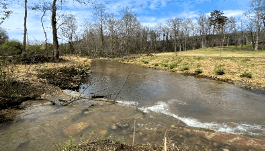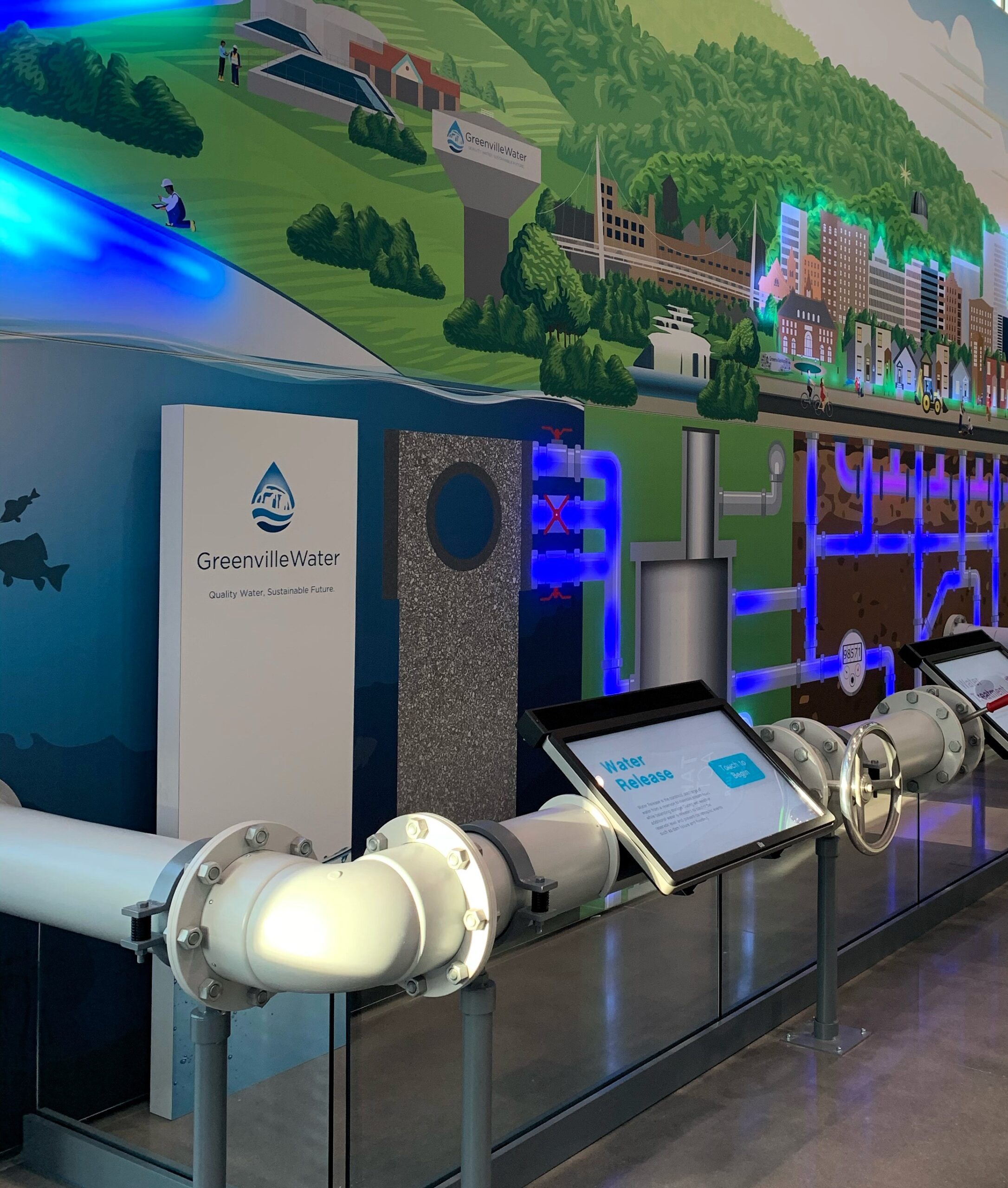Partnerships, technologies help Greenville Water protect watersheds
August 6, 2024

AWWA Articles
Partnerships, technologies help Greenville Water protect watersheds
 Greenville Water’s (GW) multi-faceted approach to source water protection – which integrates stakeholder collaboration, conservation, public outreach and more – earned the South Carolina utility this year’s Exemplary Source Water Protection Award for Large Systems from the American Water Works Association (AWWA). (Pictured right, confluence of the North Saluda dam release and the Callahan Branch of the North Saluda River.)
Greenville Water’s (GW) multi-faceted approach to source water protection – which integrates stakeholder collaboration, conservation, public outreach and more – earned the South Carolina utility this year’s Exemplary Source Water Protection Award for Large Systems from the American Water Works Association (AWWA). (Pictured right, confluence of the North Saluda dam release and the Callahan Branch of the North Saluda River.)
 “This recognition highlights our steadfast commitment to safeguarding our community’s water supply through the combination of talent and technology, ensuring its purity and availability for current and future generations,” said Jeff Boss, GW CEO.
“This recognition highlights our steadfast commitment to safeguarding our community’s water supply through the combination of talent and technology, ensuring its purity and availability for current and future generations,” said Jeff Boss, GW CEO.
Nestled in the foothills of the Blue Ridge Mountains, GW relies on the Table Rock and North Saluda watersheds to provide drinking water to its more than 500,000 customers. Beginning with a conservation easement in 1993 with The Nature Conservancy, GW has a long history of prioritizing source water protection.
“Our conservation easement agreement with The Nature Conservancy has fundamentally shaped Greenville Water’s source water protection efforts over the past three decades,” said Robert Schmidt, GW’s chief administrative officer. “By legally protecting approximately 30,000 acres of the North Saluda and Table Rock Reservoirs’ watersheds, this agreement ensures long-term preservation of natural landscapes and water quality by restricting development and other detrimental activities.”
Protecting Greenville’s natural resources from contaminants like agricultural runoff, industrial discharges and urban stormwater helps support the area’s diverse habitats and maintain a stable, resilient ecosystem.
“The preserved forest cover acts as a natural filter, reducing sediment and pollutant runoff into the water supply,” Schmidt said.
Advanced tools support continuous source water monitoring
A critical component of GW’s watershed protection strategy is continuous assessment of its source water. The utility uses a range of traditional methods as well as newer, innovative technologies like drones and environmental DNA (eDNA) analysis.
 “Drones and eDNA technologies have significantly advanced Greenville Water’s watershed monitoring and protection capabilities by offering sophisticated tools for data collection, analysis and early threat detection,” said Schmidt.
“Drones and eDNA technologies have significantly advanced Greenville Water’s watershed monitoring and protection capabilities by offering sophisticated tools for data collection, analysis and early threat detection,” said Schmidt.
By conducting more than 10,000 water quality tests annually, GW can detect changes or signs of contamination early, ensuring the safety and compliance of its watersheds and nearby water sources.
GW also collaborates with key stakeholders, including the South Carolina Department of Environmental Services, South Carolina Department of Natural Resources and Greenville County Soil and Water Conservation District to build strong alliances that address current and potential source water threats.
“Partnerships with local communities, school districts, universities and government agencies are vital to Greenville Water’s source water protection program,” Schmidt said. “Local communities and landowners engage in volunteer programs to raise awareness, universities conduct research and field studies, and government agencies offer regulatory support and policy development.”
 GW actively educates the public about the importance of water conservation and environmental stewardship. Through initiatives like the “Our Water Story” exhibit (pictured left) at the Roper Mountain Science Center – which visualizes the water cycle through the local Greenville watershed – the utility aims to inspire the next generation of water professionals and foster a sense of community ownership of water resources.
GW actively educates the public about the importance of water conservation and environmental stewardship. Through initiatives like the “Our Water Story” exhibit (pictured left) at the Roper Mountain Science Center – which visualizes the water cycle through the local Greenville watershed – the utility aims to inspire the next generation of water professionals and foster a sense of community ownership of water resources.
GW’s initiatives highlight why AWWA is celebrating Source Water Protection Week Sept. 29-Oct. 5. The promotion aims to engage consumers, water utilities and environmental advocates and demonstrate that the best way to ensure high quality drinking water is to protect water sources. Downloadable materials are available on the Source Water Protection Week materials webpage.
Advertisement